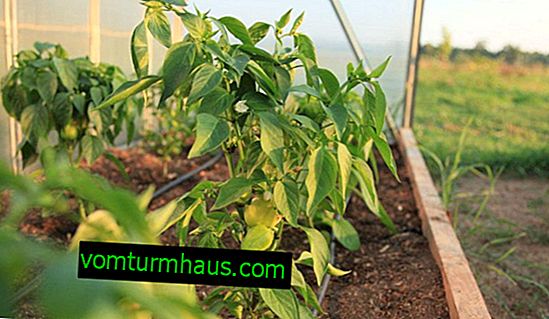Methods for feeding peppers during flowering and setting
Sweet pepper, due to the simplicity of cultivation and care, excellent marketability and taste, took a worthy place among vegetable plants cultivated by gardeners. Agrarians from different regions know that to obtain a plentiful harvest, a vegetable needs valuable, useful components. What fertilizers need to be applied under the plant, and how to properly fertilize, let's figure it out.
What batteries are needed?
Sweet pepper is a plant from the solanaceous family, the growth of which requires cultivated, loose soils rich in nutrients. In different phases of the ripening of the vegetable, different types of fertilizers are needed.

Among the components that pepper needs are three main ones:
- Nitrogen It is required for the plant at the initial stage of the growing season and during the formation of the ovaries to activate growth. Further fruit ripening takes place with minimal introduction of nitrogen fertilizers, since their excessive amount negatively affects the taste and size of peppers.
- Phosphorus It is necessary for the formation of the root system of the plant and ovaries. The absence of phosphorus fertilizing negatively affects the formation of ovaries and the growth of fruits. Phosphorus deficiency is easy to recognize by the appearance of the culture: the upper leaves begin to spin, acquire a purple-purple hue, the lower ones crumble.
- Potassium Potash remedies are needed for the plant during budding and before fruiting. Substances allow fruits to acquire the desired shape, contribute to good keeping quality. With a lack of potassium, peppers quickly lose their marketability after harvesting, are poorly preserved, and quickly rot and deteriorate.
Types of fertilizer during flowering and setting
When cultivating sweet or bitter peppers, you need to remember that the plants are quite “gluttonous”. High crop yields are only possible when grown on nutritious, non-acidic soils. In the process of top dressing, farmers use two types of fertilizers: on a mineral and organic basis.
Mineral
Fertilizers are a complex of nutrients characterized by inorganic origin, having a wide range of action and providing high efficiency for the growth and development of garden plants. Mineral fertilizers are based on metals and compounds - salts, acids, oxides.

- Nitrogen . They have diffuse qualities and are introduced into the soil very early in order to manage to enrich the soil with valuable components necessary for plant growth. Among nitrogen fertilizers suitable for dressing: ammonium nitrate, nitrate, urea.
- Potash . Used in the autumn for digging, and also, starting from the period of formation of the ovaries, ending with the fruiting phase. Potash preparations are suitable for intensive growth of fruits, their rapid ripening and ensuring good keeping quality of peppers after harvesting. As mineral fertilizers used: potassium chloride, potassium sulfate, potassium salts.
- Phosphoric . Contribute in the process of active development of culture. They increase the protective functions of the plant, allow you to fight diseases and parasites. The most popular are simple and double superphosphate, phosphorite flour.
Organic
Organic dressings contain only natural components that make up the same substances - phosphorus, potassium and nitrogen, but have a natural (plant or animal) origin.
Organic products are in harmonious union with the soil, enriching it with valuable bacteria, useful components that beneficially influence the development of culture during the formation and ripening of fruits.
Video: Top dressing for sweet pepper
Organics include:
- manure - makes it possible to increase the yield and improve the aesthetic properties of the fruit;
- bird droppings - a nutritious organic product that has a rich chemical composition that has a beneficial effect on the processes of plant development;
- compost - a mixture of organics (leaves, peat, sawdust, shavings);
- peat - makes the soil lighter, airier, loose, which positively affects the future crop.
Folk remedies
In addition to traditional mineral and organic preparations, gardeners often use folk remedies for top dressing, designed to effectively and, most importantly, safely, affect the ripening and growth of fruits.
As fertilizers use:
- Eggshell . It contains an increased concentration of calcium, phosphorus, magnesium and organic substances that are important for nutrition and cultural development. In addition, the shell reduces the acidity of the soil and enriches its structure. For the preparation of fertilizers, pre-dried and disinfected shells, infused for 5 days in clean water, are used.
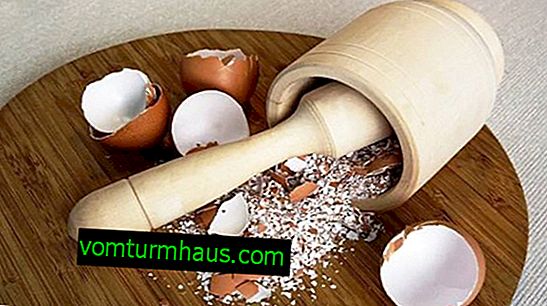
- Serum . Dairy products have a balanced composition, which allows to improve the structure of the soil, prevent the development of late blight, improve the taste of peppers. Whey can be used to treat the first greenhouse seedlings of a crop, as well as plants planted in open ground. 1 liter of the dairy product is diluted in 10 liters of water before being added, mixed thoroughly and poured under the bush at a dosage of 1 liter
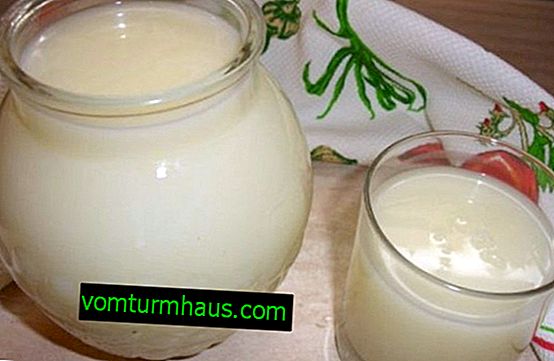
- Tea Tea fertilizers are useful for seedlings that are just beginning to develop. They contain trace elements that support good plant health. For feeding, infusion of linden, nettle, dandelion, plantain is used. Medicinal decoctions spray the culture during its flowering or contribute funds under the root.

- Yeast Pepper bushes can be treated with a solution based on yeast, which contain a large amount of potassium, manganese and nitrogen. Such a tool serves as a growth stimulator and activates the intensive development of the root system.

Feeding Methods
Of great importance are not only the quality and type of top dressing, but also the methods of their application. Fertilizers, depending on the type, are applied by the root or extra-root method. Important! Folk remedies are not able to have a quick effect, but are considered safe, and do not accumulate in the fruits.
Root
Root fertilization is based on the enrichment of plants with nutrients through the nutrition of the root system.

Exist:
- superficial root top dressing, when funds are scattered across the soil near the plant;
- subsoil root application, when drugs diluted in water are poured under the bush. Thus, slurry, diluted bird droppings, various fertilizers are introduced.
Did you know? Pepper burning appeared in the process of evolution. This property of the vegetable scared away animals, and vice versa, attracted birds, on which the burning substance does not act, and which contribute to the spread of seeds. Passing through the stomach of the bird, the grains remain intact, which cannot be said about animals.
Foliar
Unlike root, foliar top dressing helps nourish the culture through foliage and stem. Fertilizers are applied by spraying greens.
Such events result in several cases:
- with high soil moisture and too dense soil structure;
- during drought, when plant nutrition through the root system is difficult;
- with an increased level of acidity of the earth, when some types of phosphates cannot be absorbed by the roots;
- in the flowering phase of the culture, when it is especially urgently in need of additional nutrition.
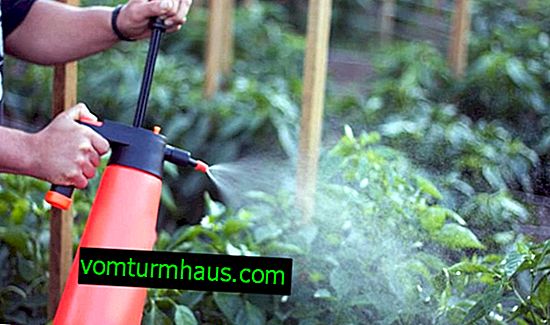
Important! The concentration of nutrients during foliar dressing should be an order of magnitude higher than when fertilizing directly under the root.
How to fertilize?
To get the maximum effect from the fertilizing, the timing of fertilizing should be observed. During the ripening period of sweet pepper, four top dressings are recommended. If there are clear symptoms of nutritional deficiencies, additional nutrition should be provided.
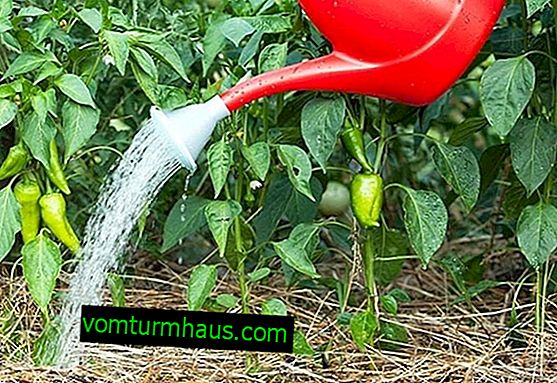
Fertilizers must be applied:
- Before flowering . Two weeks after transplanting, when it is completely rooted. At this time, the plant intensively grows green mass, therefore, it needs nitrogen-phosphate preparations. For this purpose, use a mixture of 10 l of water, 10 g of urea and 25 g of superphosphate. The resulting solution is poured under the root, in a dosage of at least 1 liter per bush.
- In the flowering phase . They are fed twice: by the root and root method. The foliage of the plant is sprayed with a solution of water (10 l), sugar (0.5 kg) and boric acid (10 g). This tool allows you to attract pollinating insects, prevent the falling of ovaries, serves as a prevention of viral ailments and fungi. After 3-4 weeks, peppers are poured with nettle infusion, for the preparation of which, fresh nettle is poured with water and insisted for a day.
- In the budding phase . Nitrogen-containing preparations are required that are applied under the root. A solution of urea (5 g), superphosphate (10 g) and potassium sulfate (5 g), diluted in 10 l of water. Each bush will require 150-300 ml of the drug.
- In the fruiting phase . Complex fertilizers, for example, nitrophoska, or products prepared on the basis of one-component chemicals, for example, superphosphate (40 g), potassium salt (20 g) and 10 l of water, eliminate the deficiency of valuable components. On depleted soils, you can also apply the infusion of bird droppings mixed with any minerals.
Important! A similar feeding scheme is used when growing peppers on the open ground, a similar scheme is used in the greenhouse. The difference lies in the reduced amount of nitrogen fertilizers, leading to a thickening of plantings.
Useful tips gardeners
Incorrect application of nutrients can lead to burns of vegetative mass and roots, as well as reduced yield.
To avoid mistakes during feeding, the recommendations of experienced farmers will help:
- Fertilizing is carried out only after abundant moistening of the plant;
- root or foliar top dressing is carried out on a cloudy day, closer to evening or in the morning, when there is no direct sunlight;
- strictly monitor the dosages of the drugs introduced, since their excessive amount can adversely affect the yield and taste properties of peppers;
- mineral and organic dressings alternate, moreover, the interval between them should be at least two weeks;
- 14 days before harvesting, any fertilizer application is terminated.
